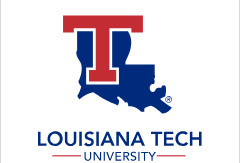Date of Award
Winter 3-1-2025
Document Type
Thesis
Degree Name
Master of Science (MS)
Department
Mechanical Engineering
First Advisor
Prabhu Arumugam
Recommended Citation
Ahmed, Jamiu Busayo, "" (2025). Thesis. 134.
https://digitalcommons.latech.edu/theses/134
Included in
Environmental Engineering Commons, Mechanical Engineering Commons, Water Resource Management Commons


Comments
The Electrochemical Advanced Oxidation Process (EAOP) is crucial for breaking down challenging organic pollutants in industrial wastewater and contaminated surface and groundwater. The addition of ultrasound to EAOP, known as the Sono-Electrochemical Advanced Oxidation Process (SEAOP), has gained attention due to improved oxidation by increasing mass transfer rates and reaction speeds through cavitation and generation of reactive oxygen species. In this study, we conducted a comparative analysis of SEAOP and EAOP using methylene blue (MB) and PFOA as a model pollutant, a mixed metal oxide (ruthenium-iridium oxides) anode, a stainless-steel cathode, and sodium chloride electrolyte. We investigated key process parameters such as sonication frequency (20 kHz) and amplitude (50% and 80%), current densities (10, 25, and 50 mA/cm²), and solution mixing at 100 rpm on MB degradation. Chemical Oxygen Demand (COD) reduction rates, discoloration reduction levels, and process energy requirements. The key conclusions are: At a low current density of 10 mA/cm², EAOP demonstrated superior performance over SEAOP in the degradation and discoloration of MB, achieving 82% degradation in 45 minutes, whereas SEAOP at 50% amplitude achieved only 70% and SEAOP at 80% amplitude achieved 66% in the same duration. However, as the current density increased, SEAOP outperformed EAOP. At a current density of 50 mA/cm², SEAOP achieved the same level of discoloration in 30 minutes and took EAOP 90 minutes to accomplish. Furthermore, ultrasonication alone was ineffective in discoloring and decomposing MB under the conditions of these experiments. A preliminary study on the degradation of PFOA using SEAOP resulted in 75% degradation in 120 minutes, which could have taken longer if EAOP had been used. Research is ongoing to improve this result through optimization of process parameters.